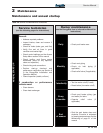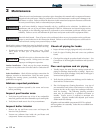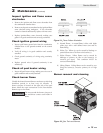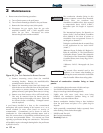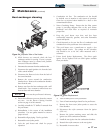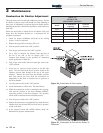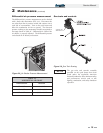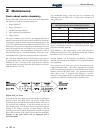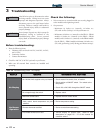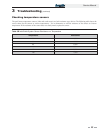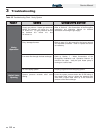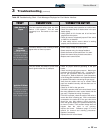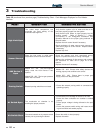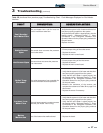
20
Service Manual
Facts about water chemistry
Factors which affect pool and spa water and, more importantly,
the efficiency of your new pool/spa heater are:
1. Proper Filtration
2. Proper Circulation
3. Disinfection and Oxidation
4. pH Control and Total Alkalinity
5. Algae Control
The water chemistry of your pool or spa changes daily due to
natural evaporation of the water and the addition of chemicals.
Chemicals are used to sanitize and control algae growth in the
pool. Their addition must be carefully monitored. If there is an
imbalance in the pool water chemistry, the minerals in the pool
water will precipitate out and collect in the pool, filter system
and the pool heater. The accumulation of minerals or scale in
the pool heater due to a chemical imbalance will cause a non-
warrantable failure of the heat exchanger and its components.
pH is the most important factor in maintaining proper balance
in your pool/spa water. pH is the measurement of the acidity or
alkalinity of water. The chart in FIG. 2-10 shows the ideal pH
range and what can happen when the pH increases or decreases
from the ideal of 7.2 to 7.8.
Figure 2-10_pH Scale
If the pH becomes too high, it lowers the ability of chlorine to
destroy bacteria and algae, water can become cloudy, filter
elements may become blocked, and scale formation will occur in
the pool and heat exchanger. If the pH becomes too low the
water becomes acid. You can have eye burn and skin irritation,
etching of the plaster, corrosion of metal fixtures, and the
resulting stains on the plaster, degradation of sand and gravel
filters, and corrosion of the copper tubes in the heat exchanger.
Damage to the pool heater due to improper pH is
non-warrantable.
TABLE - 2D
RECOMMENDED POOL CHEMISTRY LEVELS
Test Recommended Level
Correct pH 7.2 - 7.8
Chlorine Residual 1.0 - 5.0 ppm
Total Alkalinity 80 - 120 ppm
Calcium Hardness 175 - 350 ppm
Chlorine residual is the chlorine remaining in the pool water
after it is consumed in the process of destroying bacteria, algae,
and other oxidizable materials.
Total alkalinity is the measurement of the total amount of
alkaline chemicals in the water. Alkalinity controls pH. Sodium
bicarbonate is used to raise total alkalinity.
Calcium hardness can be raised by the addition of calcium
chloride, and lowered by the addition of Tri-sodium Phosphate
or its equivalent.
The corrosive level of pool water can also be measured by the
Langlier Saturation Index. This index is calculated by a formula
which uses operating temperatures, total alkalinity, pH, calcium
hardness and total dissolved solids. The optimum Saturation
Index value is zero. A negative value indicates a corrosive
condition. Your pool/spa dealer can provide additional data and
equipment to make this measurement if a problem exists.
2
Maintenance
We recommend using a four-way test kit to monitor the
following levels (see Table 2D) to ensure proper operation of
your pool heater:




